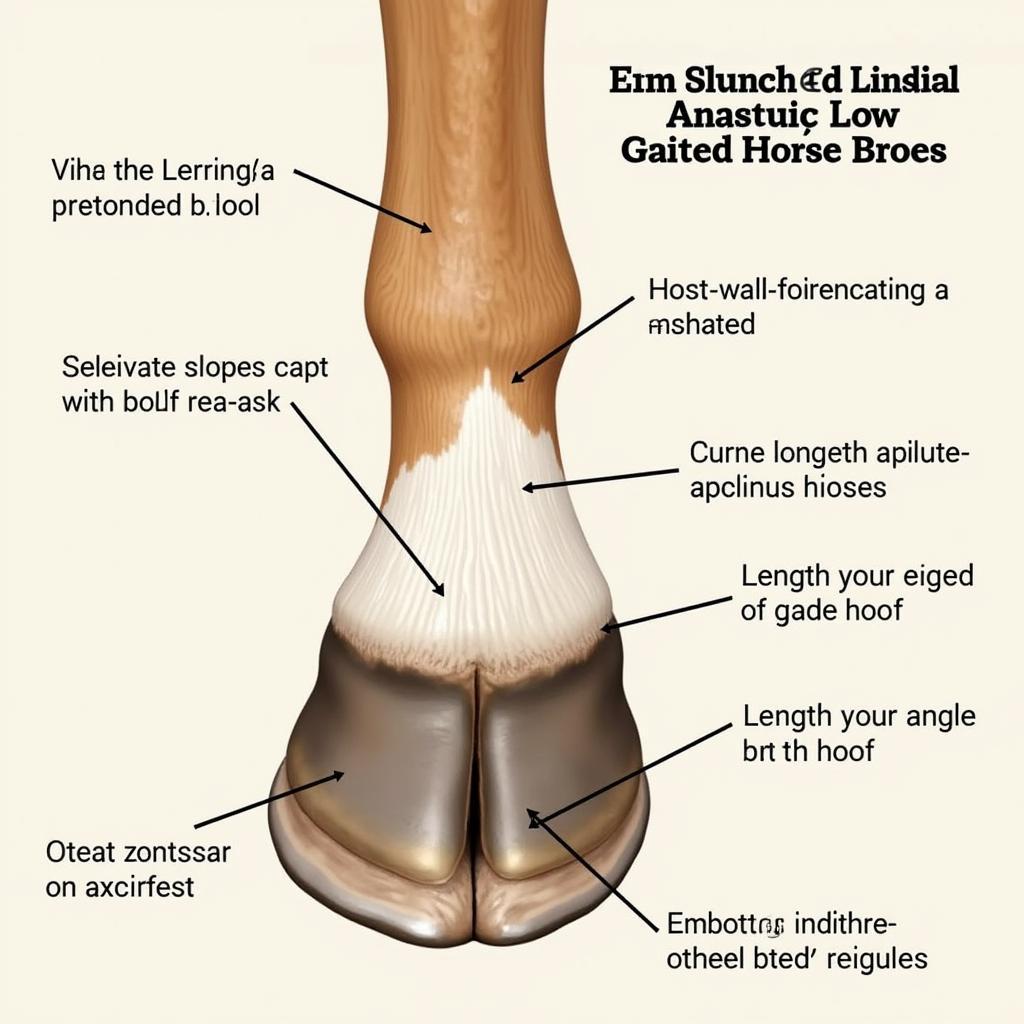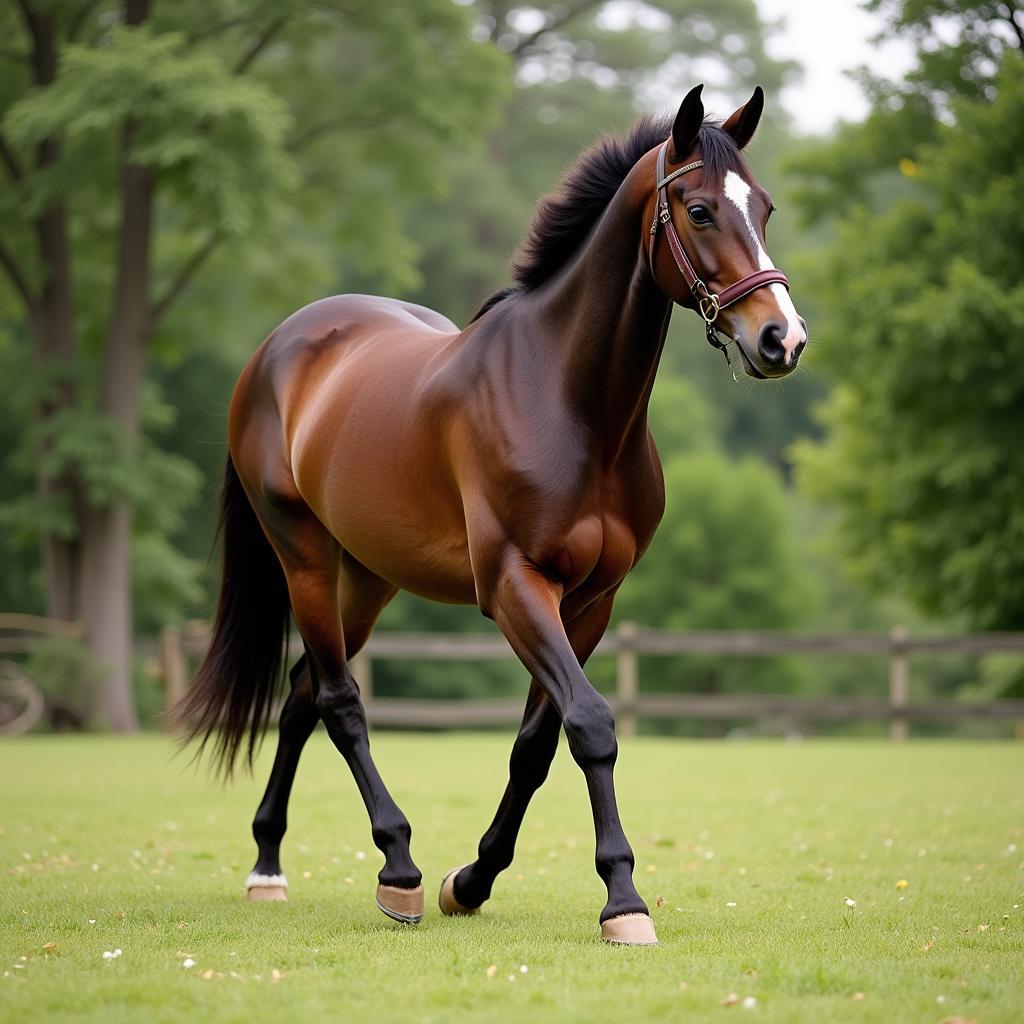Gaited Horse Shoes are specifically designed to enhance the comfort and performance of gaited horse breeds. Understanding the unique needs of these horses is crucial when selecting the right footwear.
What Makes Gaited Horse Shoes Different?
 Gaited Horse Hoof Anatomy
Gaited Horse Hoof Anatomy
Unlike their non-gaited counterparts, gaited horses are known for their smooth, four-beat gaits, such as the running walk, fox trot, and paso fino. These gaits involve a specific sequence of footfalls and require specialized shoeing to support their natural movement and prevent interference. Gaited horse shoes are typically lighter than traditional shoes and may feature modifications to the toe, heels, or branches to accommodate the horse’s unique gait characteristics.
Types of Gaited Horse Shoes
There is no one-size-fits-all approach to gaited horse shoes. The best type of shoe depends on various factors, including the horse’s breed, gait, terrain, and the farrier’s professional assessment. Here are some common types:
- Square Toe Shoes: These shoes have a squared-off toe, promoting a longer breakover period and smoother transition between strides. This design can be particularly beneficial for horses that tend to “knee-knock” or interfere with their front legs.
- Round Toe Shoes: Round toe shoes offer a more traditional shape and are suitable for gaited horses that don’t require significant modifications to their shoeing.
- Heart Bar Shoes: These shoes feature a bar across the heels, providing additional support to the back of the foot and relieving pressure on the frog and digital cushion. Heart bar shoes can be beneficial for horses with navicular issues, thin soles, or those needing extra support during the gait.
Factors to Consider When Choosing Gaited Horse Shoes
 Gaited Horse Shoe Fitting
Gaited Horse Shoe Fitting
Selecting the right gaited horse shoes is a collaborative process involving the horse owner and a qualified farrier. Key factors to discuss include:
- Breed and Gait: Different gaited breeds have varying hoof shapes and gait characteristics. For instance, a Tennessee Walking Horse may require different shoeing compared to a Missouri Fox Trotter.
- Discipline and Terrain: The horse’s primary riding discipline and the terrain they work on influence shoe selection.
- Hoof Condition: The horse’s overall hoof health, including the hoof wall thickness, sole depth, and any existing conditions, must be considered.
- Farrier’s Expertise: A knowledgeable and experienced farrier specializing in gaited horses is invaluable. They can assess the horse’s individual needs and provide tailored shoeing solutions.
The Importance of Proper Shoeing
Proper shoeing is paramount for the well-being of any horse, but especially crucial for gaited breeds. Ill-fitting or inappropriate shoes can lead to discomfort, gait abnormalities, and even lameness. Regular farrier visits every 4-6 weeks are essential to maintain proper hoof balance and address any issues promptly.
 Gaited Horse Soundness
Gaited Horse Soundness
Conclusion
Choosing the right gaited horse shoes requires careful consideration of various factors unique to each horse. By working closely with a qualified farrier and prioritizing hoof health, you can ensure your gaited horse enjoys optimal comfort, performance, and longevity.
For all your gaited horse shoe needs and expert farrier services, contact Justus Horses USA at 0772127271 or [email protected]. We’re located at QGM2+WX2, Vị Trung, Vị Thuỷ, Hậu Giang, Việt Nam, and our dedicated team is available 24/7 to answer your questions.